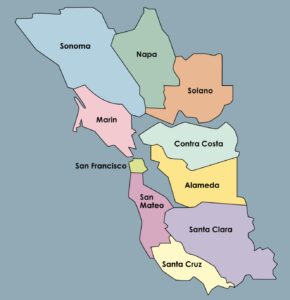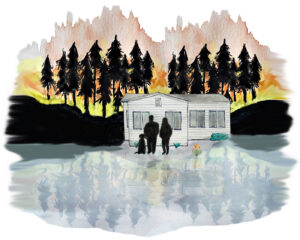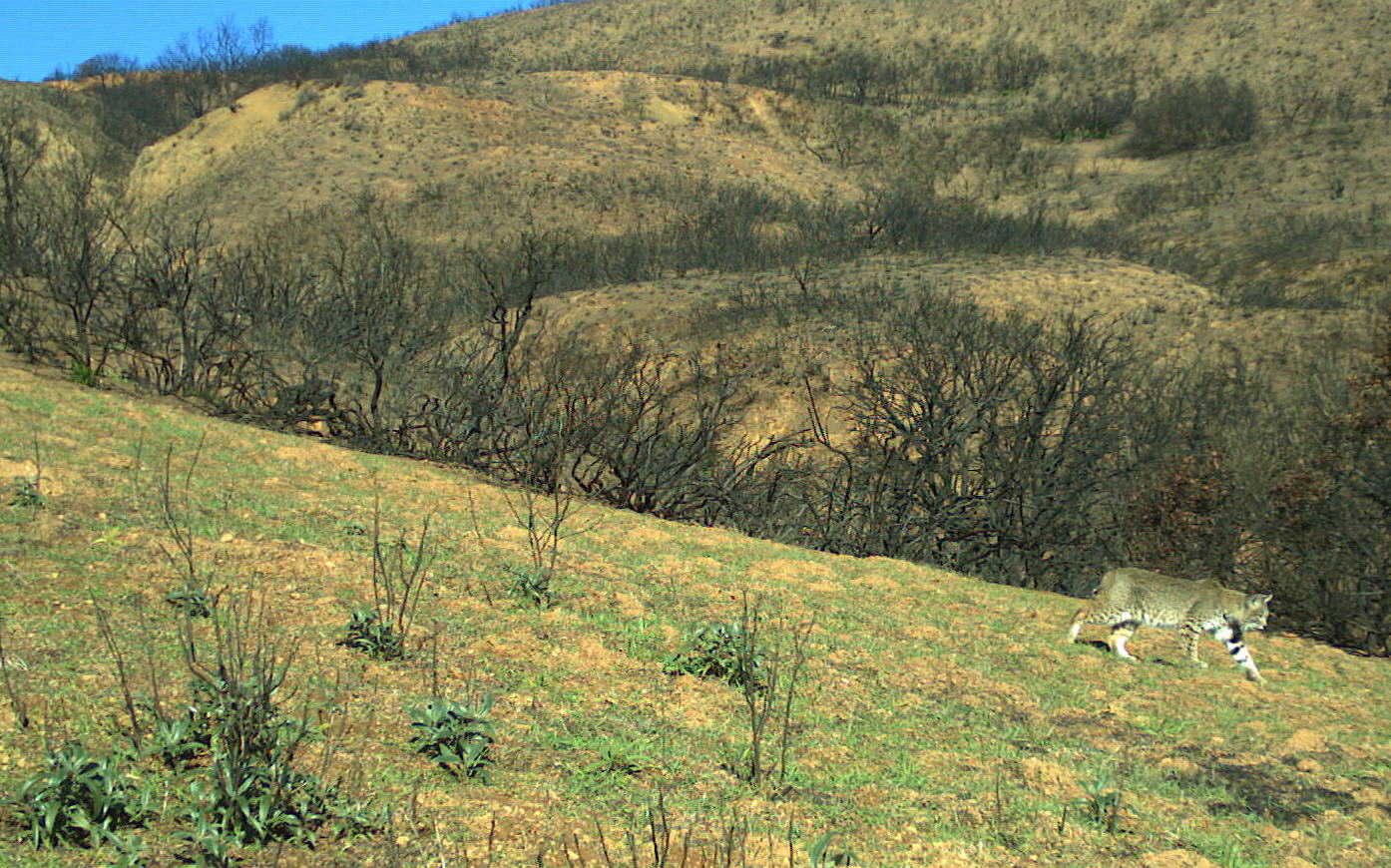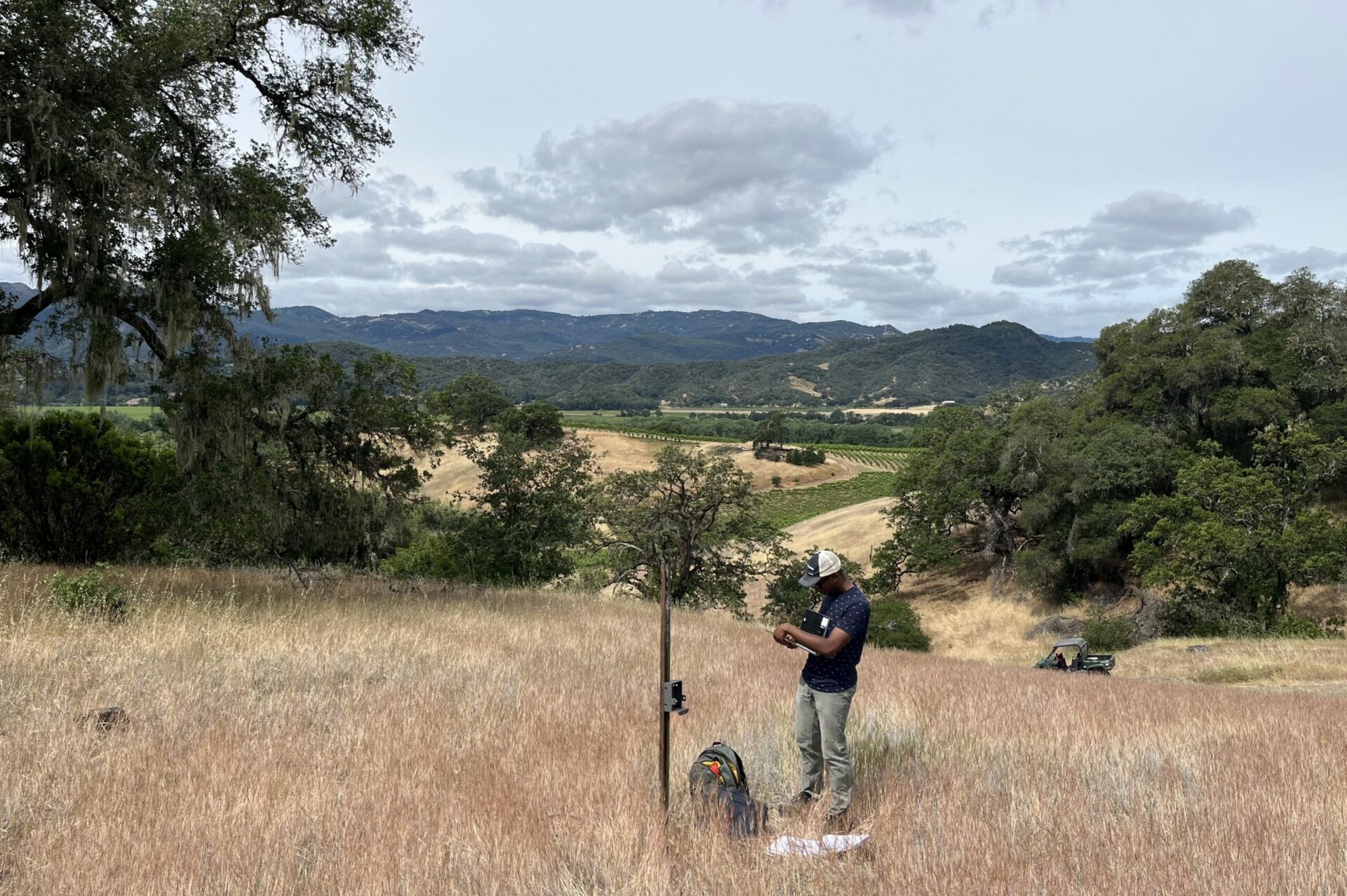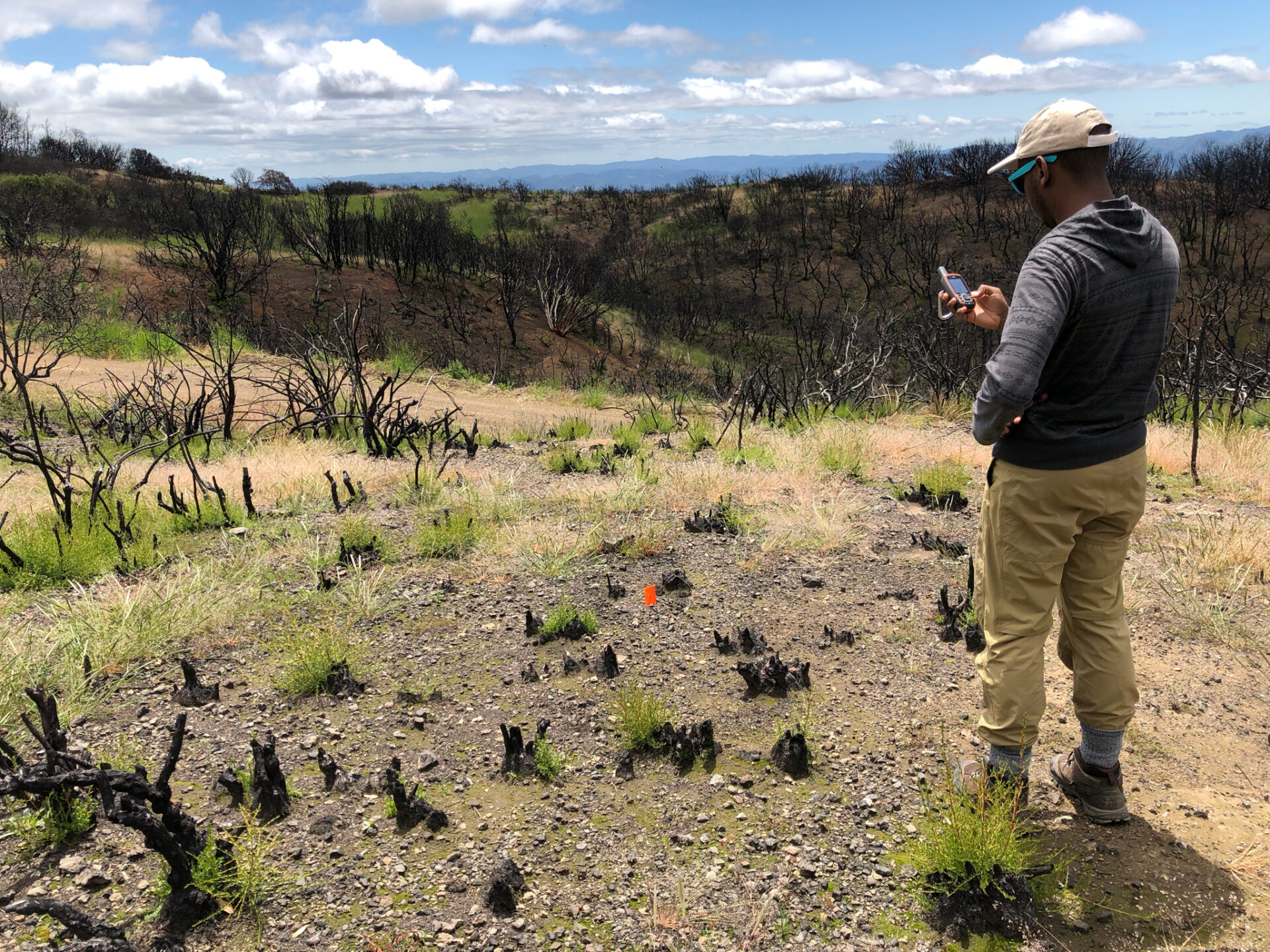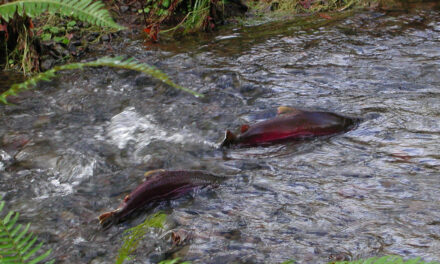Wildlife Rolls With Wildfire
Imagine a Mad Max-style wasteland, ravaged by wildfire — but populated by a scene straight out of Disney’s Snow White: foxes, jackrabbits, and other woodland fauna frolicking around as usual. That’s what Kendall Calhoun, PhD candidate and researcher at UC Berkeley’s Brashares lab, was surprised to see just months after one of California’s biggest megafires. Even when our iconic oak trees and grassland savannas go up in flames, these mammals are tougher than you might think.
The 2018 Mendocino Complex Fire raged across large swaths of Northern California, including the 5,300-acre UC Hopland Research and Extension Center located on the Russian River. “It was really scary,” Calhoun says, “because people live on site. There was a big rush to evacuate. The fire ended up burning more than half of the area.”
His July 2023 study in the journal Ecosphere, one of the first to examine wildlife before and after a megafire, revealed that most species of small- and medium-sized mammal showed “strong resistance” to the effects of the Mendocino fire. Using 36 motion-sensor camera traps, his team captured over half a million snapshots from March 2016, more than two years before the fire, and December 2020, more than two years after. They found that coyotes, black-tailed jackrabbits, gray foxes, racoons, striped skunks, and bobcats returned to the area at the same frequency pre- and post-fire.
Dr. Kendall Calhoun checking a monitoring camera in Sonoma. Photo: Jackie Mara Beck, Brashares Lab, UC Berkeley.
The team’s theory is that even small remnants of tree cover provide sufficient food and resources for these species to survive an otherwise barren landscape. Professor Justin Brashares, the head of Calhoun’s lab, explains, “Even this incredibly hot and devastating fire still managed to leave behind little unburnt patches. We were surprised at how quickly many species were able to move into those habitat patches and then spread back out into the burned areas as they recovered.”
All of this is a valuable lesson for environmental scientists and policymakers. “Our main policy solution for a while was to suppress all fires, but that has created some paradoxical problems,” says Calhoun. “Now we have many high fuel load areas that are ready to burn, especially since climate change is making weather events more extreme.” His team recommends shifting to preventative techniques like grazing or prescribed burning, which reduce wildfire intensity while retaining these vital oases of tree canopy.
Calhoun uses a GPS unit to take some location fixes at the Hopland field site ten months after the fire. Photo: Adam Langton Burnell, Brashares Lab, UC Berkeley.
Not all species in Calhoun’s study were so quick to adapt to the fires. Western gray squirrels and black-tailed deer proved slower to return to the area, with squirrels struggling especially because they spend the majority of their time in trees. And Calhoun suspects that apex predators like black bears and mountain lions could take even longer to recover. “There’s a lot of research coming out now that suggests that climate change might exacerbate conflicts between wildlife and people, because we’re both increasingly dependent on fewer and fewer resources that are burned or dried out by drought and fire. I’d love to investigate if, for example, the San Jose fires have been pushing animals into urban spaces.”
Calhoun says that continuing to study the after-effects of wildfires can help California improve wildfire policies over time. “Another project I’m trying to kick off is a region-wide monitoring project, so we’ll be able to predict how animals will respond to future fires. California’s ecosystem has already adapted to account for wildfire — we just have to learn to coexist with it.”
Other Recent Posts
Gleaning in the Giving Season
The practice of collecting food left behind in fields after the harvest is good for the environment and gives more people access to produce.
New Study Teases Out Seawall Impacts
New models suggest that sea walls and levees provide protection against flooding and rising seas with little effect on surrounding areas.
Oakland High Schoolers Sample Local Kayaking
The Oakland Goes Outdoors program gives low-income students a chance to kayak, hike, and camp.
Growing Better Tomatoes with Less Water
UC Santa Cruz researchers find the highly-desired ‘Early Girl’ variety yields more tomatoes under dry-farmed conditions.
Santa Clara Helps Homeless Out of Harm’s Way
A year after adopting a controversial camping ban, Valley Water is trying to move unsheltered people out of the cold and rain.
The Race Against Runoff
San Francisco redesigns drains, parks, permeable pavements and buildings to keep stormwater out of the Bay and build flood resilience.
Learning the Art of Burning to Prevent Wildfire
In Santa Rosa’s Pepperwood Preserve, volunteers are learning how controlled fires can clear out natural wildfire fuel before it can spark.
Martinez Residents Want More Than Apologies — They Want Protection
After a 2022 release of toxic dust and a February 2025 fire, people in the northeast Bay town are tired of waiting for safety improvements.
Weaving Fire Protection Out Of What’s Already There
A new Greenbelt Alliance report shows how existing vineyards, grasslands, and managed forests can slow wildfire and save vulnerable homes.
Fall Plantings Build Pollinator Habitats in Concord
Community groups, climate advocates and a church are coming together to plant pollinator gardens as monarchs, bees see population declines.

